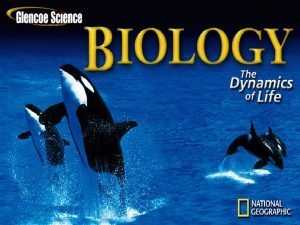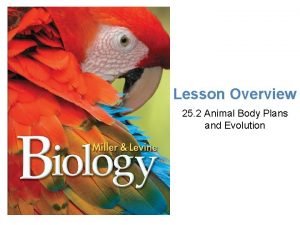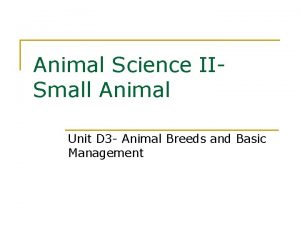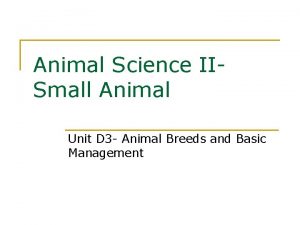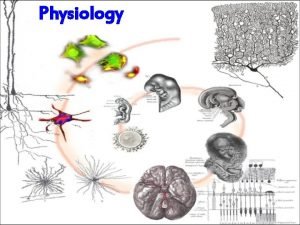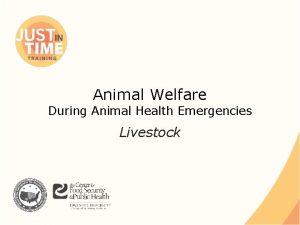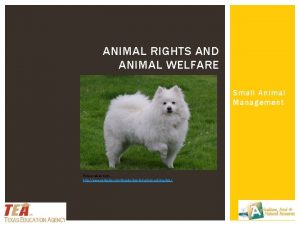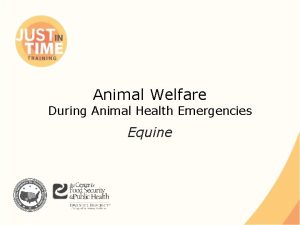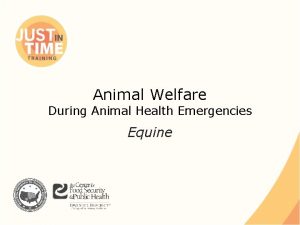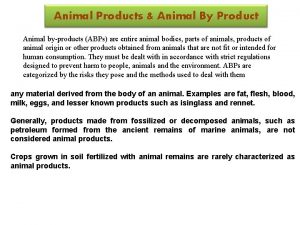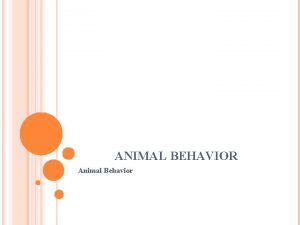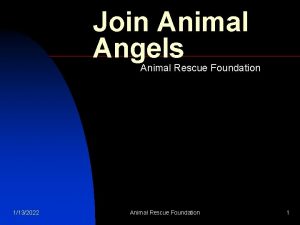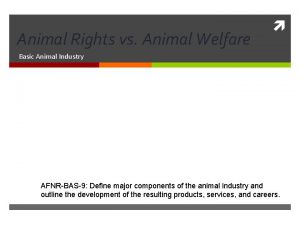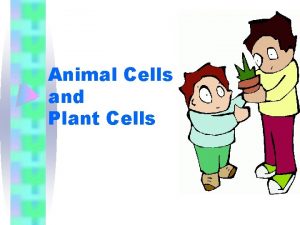Unit 3 Lesson 2 What Are Some Animal

















- Slides: 17

Unit 3 Lesson 2 What Are Some Animal Life Cycles? Copyright © Houghton Mifflin Harcourt Publishing Company


Unit 3 Lesson 2 What Are Some Animal Life Cycles? Life Cycles • All animals reproduce, or have young, but not in the same way. • Birds and some fish, reptiles, and amphibians lay eggs. Copyright © Houghton Mifflin Harcourt Publishing Company

Unit 3 Lesson 2 What Are Some Animal Life Cycles? Life Cycles Other animals, such as mammals, give birth to live young. Copyright © Houghton Mifflin Harcourt Publishing Company

Who is this?


Unit 3 Lesson 2 What Are Some Animal Life Cycles? Frog Life Cycle • A tadpole is an immature frog that must live in the water. It hatches from an egg. • It has gills and a tail. It breathes and swims like a fish. Copyright © Houghton Mifflin Harcourt Publishing Company

Unit 3 Lesson 2 What Are Some Animal Life Cycles? Frog Life Cycle • After about five weeks, the tadpole starts to change. Tiny buds beside the tail grow into little hind legs. Copyright © Houghton Mifflin Harcourt Publishing Company

Unit 3 Lesson 2 What Are Some Animal Life Cycles? Frog Life Cycle Then, as a tadpole, the young frog develops four legs. Its tail will soon disappear and its lungs are almost completely developed. Copyright © Houghton Mifflin Harcourt Publishing Company

Unit 3 Lesson 2 What Are Some Animal Life Cycles? Frog Life Cycle Finally, the frog has fully developed lungs and legs. It’s an adult! Copyright © Houghton Mifflin Harcourt Publishing Company

Unit 3 Lesson 2 What Are Some Animal Life Cycles? Frog Life Cycle Copyright © Houghton Mifflin Harcourt Publishing Company

Unit 3 Lesson 2 What Are Some Animal Life Cycles? Frog Life Cycle • As a frog develops, its entire appearance changes. • Metamorphosis is a major change in the body form of an animal during its life cycle. • A frog goes through a series of changes after it hatches as a tadpole. Copyright © Houghton Mifflin Harcourt Publishing Company

Unit 3 Lesson 2 What Are Some Animal Life Cycles? Insect Life Cycles • Most insects undergo metamorphosis as they develop into adults. Copyright © Houghton Mifflin Harcourt Publishing Company


Unit 3 Lesson 2 What Are Some Animal Life Cycles? Insect Life Cycles • In the second stage of complete metamorphosis, the insect larva hatches from its egg. • During the third stage of complete metamorphosis, the larva becomes a pupa. The insect does not move as it slowly changes into an adult. • In both of these stages, the insect looks very different from the adult. Copyright © Houghton Mifflin Harcourt Publishing Company

Unit 3 Lesson 2 What Are Some Animal Life Cycles? Insect Life Cycles • Some insects, such as grasshoppers, go through incomplete metamorphosis. • After they hatch from eggs these insects look very much like the adults. They also go through changes as they grow, but they way they look does not change. • Grasshoppers get bigger and grow wings as they reach adulthood. Copyright © Houghton Mifflin Harcourt Publishing Company

Unit 3 Lesson 2 What Are Some Animal Life Cycles? Why It Matters Diversity • Every living thing is different. Even young that have the same parents are not the same. • Diversity — different characteristics — is what makes everyone different from one another. • Think about a family of dogs. Even though they have the same parents, each puppy might have different colored fur. They get different features from each parent. Copyright © Houghton Mifflin Harcourt Publishing Company
 Insidan region jh
Insidan region jh Copyright
Copyright Lesson 2: animal body plans: 1 biology b unit 3: animals
Lesson 2: animal body plans: 1 biology b unit 3: animals They say it only takes a little faith
They say it only takes a little faith They say it only takes a little faith to move a mountain
They say it only takes a little faith to move a mountain Ice-cream countable or uncountable
Ice-cream countable or uncountable What are some contact forces and some noncontact forces
What are some contact forces and some noncontact forces Some say the world will end in fire some say in ice
Some say the world will end in fire some say in ice Some say the world will end in fire some say in ice
Some say the world will end in fire some say in ice Some may trust in horses
Some may trust in horses Hyp opp adj triangle
Hyp opp adj triangle Animal farm quotes about power
Animal farm quotes about power Unit 6 review questions
Unit 6 review questions Venn diagram plant and animal cells
Venn diagram plant and animal cells Plant vs animal cells venn diagram
Plant vs animal cells venn diagram Animal rights vs animal welfare
Animal rights vs animal welfare Garlic uncountable
Garlic uncountable Animal body plans 2
Animal body plans 2


